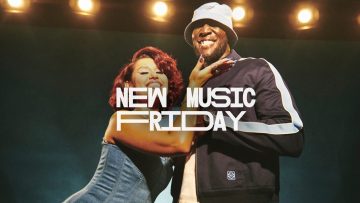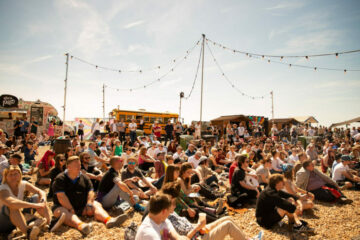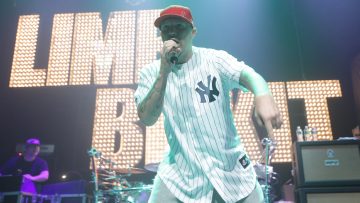For South-Indian comedian, filmmaker and sometime triathlete Anu Vaidyanathan, performing at the Edinburgh Fringe in 2022 was “a rite of passage.”
Every year, thousands of cultural Dick Whittingtons make the pilgrimage to Edinburgh to seek their fortune. They sleep on floors, burn through life savings, and test relationships to breaking point.
With more than 3,000 shows all vying for attention, most Fringe runs flicker and die over the course of three grueling weeks in a near-empty pub. For a precious few every year, though, a good Fringe show can change a life.
That promise has proved essential to the Fringe’s success over the years, and continues to bring in fresh faces of all levels of fame from across the globe.
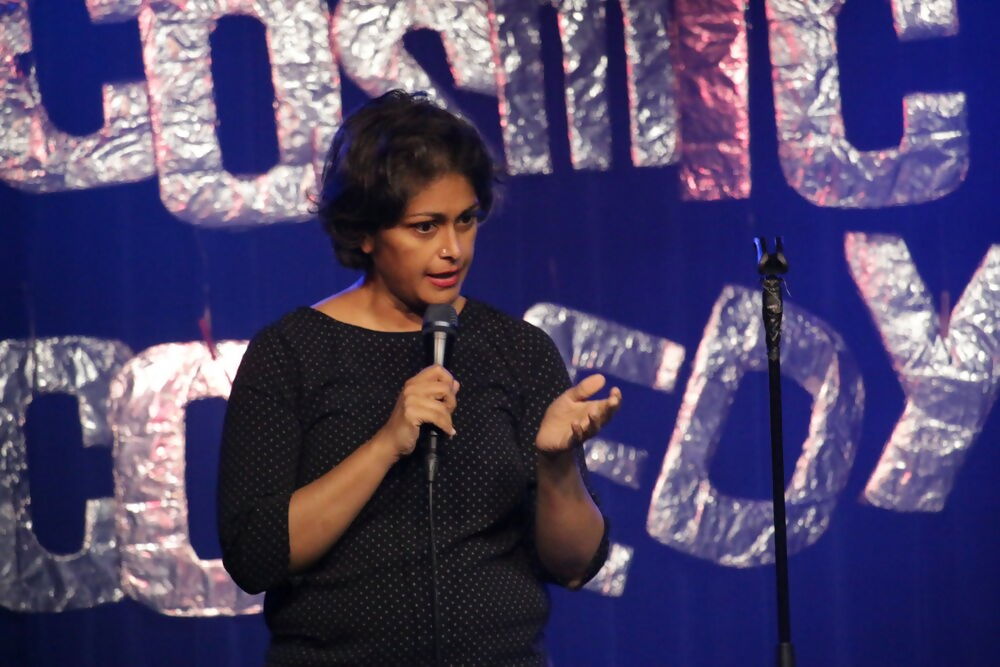
Anu Vaidyanathan is heading into her second year at the Edinburgh Fringe (Credit: Anu Vaidyanathan)
The first Edinburgh Fringe Festival – in fact, the first ‘Fringe’ festival of any kind – squatted alongside its more grown-up, highbrow cousin in 1947. The first Edinburgh International Festival might have been intended to return the arts industry to some semblance of normality after WWII, but, thanks to a group of eight rough-and-tumble theatre companies turning up uninvited to put on shows, it’s the Festival’s Fringe which has changed the UK arts scene more than any other.
With its origins firmly in the leftfield, the Fringe has long pitched itself as the scrappy underdog of the arts and culture world. In 2022, the largest arts festival in the world articulated its long-term goals with a new mission statement: “To give anyone a stage and everyone a seat.” All ‘anyone’ needs is £300 for a registration fee and a month’s worth of annual leave.
The Fringe has earned such a reputation for discovering comedy icons – from Peter Cook to Pheobe Waller-Bridge – that it’s developed the sort of alluring mystique normally reserved for swords stuck in stones – a perspective far from unique to the UK.
“The Edinburgh Fringe is such an iconic artistic phenomenon I first started to become aware of way back in theatre school,” Toronto-based TikTok star Laura Ramoso told us ahead of her debut show.
“It’s always been a goal of mine to bring a show here.”
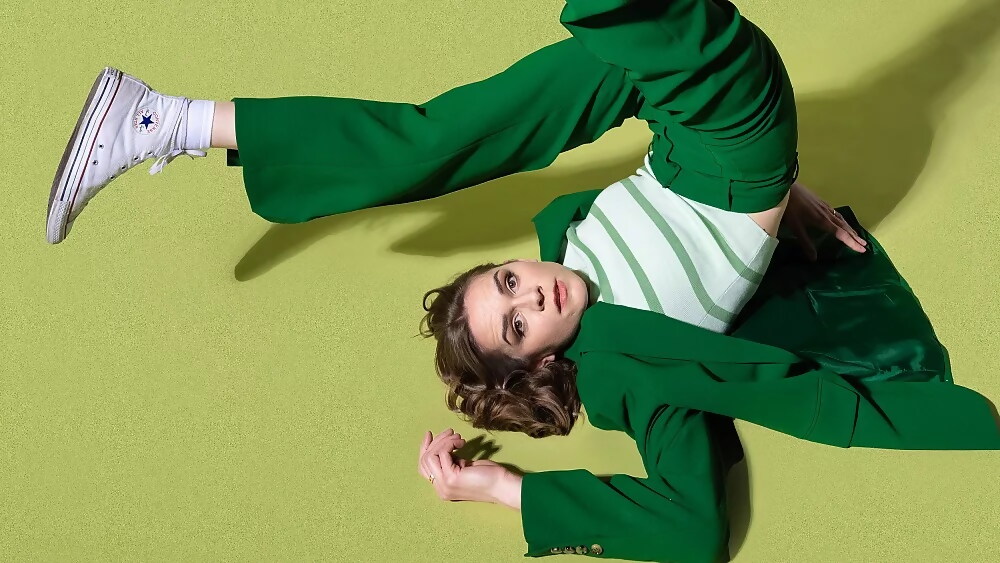
Laura Ramoso is bringing her brand of TikTok-flavoured sketch comedy to Edinburgh for the first time (Photo: Nick Merzetti)
It’s easy to forget just how unusual the Edinburgh Fringe is in the performing arts world. In an industry, particularly in the UK, overflowing with class barriers and accessibility issues, a genuine artistic free-for-all is a difficult enterprise to keep up.
“The people with big entourages line up with the littlest of us who are self-produced,” Anu Vaidyanathan says. “There’s a great levelling ground.”
In recent years, however, the distance between the Fringe’s goals and the reality of bringing a show to the festival has started to come under fire. Every year, giants of the UK stand-up scene pack out huge venues with big-budget tour shows. It’s easy to forget the Fringe’s underdog roots when a well-known comedian is staring you down from a billboard or the side of a bus.
More importantly, the all-consuming requirements of putting on a show – all the more difficult while balancing full-time work – and the hefty price tags attached to accommodation and venue hire mean that, in practice, the Fringe is far from the accessible ideal it strives towards.
READ MORE: The Edinburgh Fringe is becoming unaffordable | Is the festival near its breaking point?
Still, as an opportunity for green-behind-the-ears artists to show their creations to the world, the Edinburgh Fringe and its smaller cousins across the globe are pretty much unrivalled. Though the public and media bandwidth of the festival is always limited, and acclaim requires no shortage of either money or dumb luck, every year a few shows catapult themselves from humble beginnings to word-of-mouth phenomena.
The golden age of the 1990s into the 2000s, where scrappy sketch shows like The League of Gentlemen and The Mighty Boosh could launch almost immediately from a Fringe run onto BBC Radio, might have ended. But, as the entire UK arts sector descends on one city for all of August, the benefits of being talk of the town are far more than just a healthy ego boost.
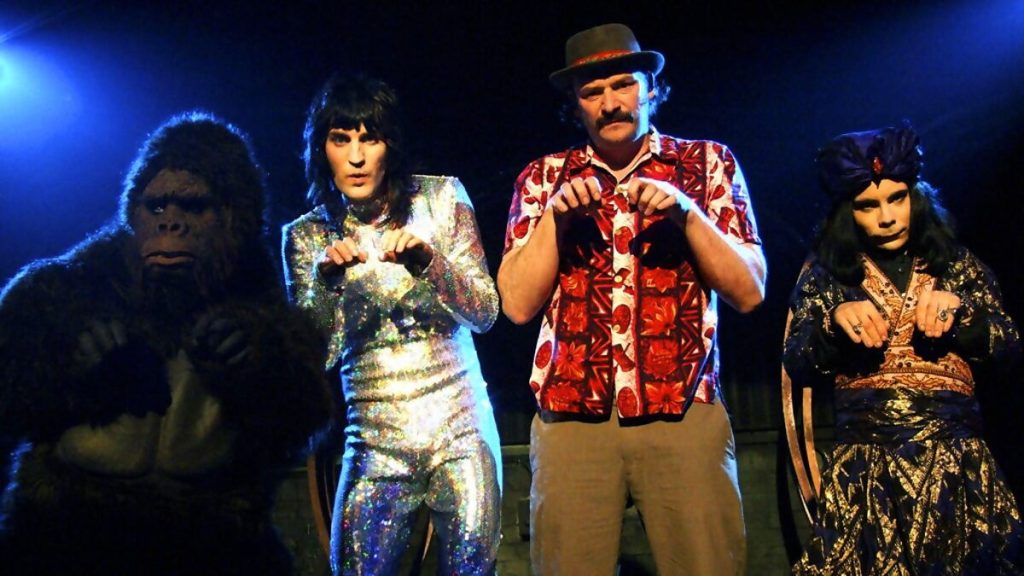
The Mighty Boosh was initially commissioned as a radio series following the success of their third Fringe show, Autoboosh, in 2000 (Credit: BBC)
“We know that by taking part, it will not only be seen by spectators, but also by presenters and producers from all over the world,” Montreal-based circus group The 7 Fingers told us. Kicking off the world tour of their new show, Duel Reality, in the Scottish capital is the sort of high-wire move thousands of performers hope will pay off every year.
But despite the potential hardships and the promise of eternal glory, for many the Fringe is a chance to find community in a profession which can often, by its freelance culture and lack of regular work, be very lonely.
“I actually have a very positive feeling about this year’s festival,” US stand-up Chris Grace says.
“Check in with me in a month to see if that bubble has been burst!”
“The level of talent at the festival is massive,” Choir!Choir!Choir! Told us. “We can’t wait to meet fellow performers and check out their shows.”
READ MORE: The Crown Jewels review | A right royal farce – and not in a fun way
And though horror stories about the Fringe’s tole on mental and physical health (tales of ‘Fringe Flu’ are almost as ubiquitous as the number of shows themselves), most performers don’t go into the festival without some appreciation for what they’re getting themselves into. Beyond the pain and the hardship, for many, the atmosphere of a good Fringe festival is electric; there’s no place they’d rather be.
“We know the Fringe is going to be demanding and intense, but we’re looking forward to taking part in it, in a fun and happy way,” The 7 Fingers told us, with no shortage of optimism.
“It’s not every day that you get the chance to take part in the world’s biggest festival!”
The Edinburgh Festival Fringe 2023 runs from 2-28 August. Details on all the artists mentioned here are available below:
Anu Vaidyanathan: Blimp (Underbelly, Bristo Square, 19:15)
Chris Grace: As Scarlett Johannsson (Assembly George Square Studios, 13:40)
Shamilton: The Improvised Hip Hop Musical (Assembly George Square Studios, 17:20)
Baby Wants Candy (Assembly George Square Studios, 21:05)
Choir!Choir!Choir! (Underbelly, George Square, 17:45)
The 7 Fingers: Duel Reality (Underbelly’s Circus Hub on the Meadows, 20:30)
Laura Ramoso: FRANCES (Pleasance Courtyard from 2-13 August, Pleasance Dome from 15-28 August, both at 20:20)

